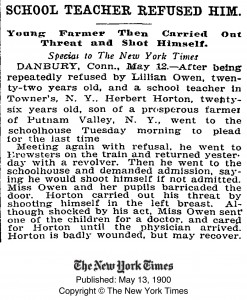
Arnie Bernstein’s book on the 1927 bombing of the Bath School in Michigan
is well-written, informative and provides valuable lessons for school safety
practitioners and experts.
I just finished reading a very well-written and informative book about the deadly 1927 school bombing in Bath, Michigan. Authored by Arnie Bernstein in 2009, Bath Massacre – America’s First School Bombing, details the second deadliest K12 school attack in United States history that we are aware of and the first school bombing. With 42 fatalities, the attack at the Bath Consolidated school still ranks second in lethality behind the 1958 arson attack carried out by an elementary student that killed 95 students and teachers at the Our Lady of Angels Sacred Hearts School in Chicago.
While many people believe that mass casualty school attacks are a new phenomenon, there have been many acts of violence including school shootings, arson attacks, school bombings and other acts of extreme violence carried out at both public and non-public schools in the United States dating back to at least 1764. While it is extremely important to learn from modern acts of school violence, we often see that the fundamental lessons in improving safety have not changed much since the 1800s. For example, the first successful school lockdown that we are familiar with took place in a one-room school house in Danbury, Connecticut in 1900. Over a century later and just a few minutes drive away, our nation’s deadliest school shooting would occur in Sandy Hook in an incident where most of the fatalities occurred in two unlocked classrooms.

A Safe Havens analyst found this story of a successful school lockdown in 1900 while conducting research for a school security assessment for a Connecticut school district.
Bath Massacre provides valuable lessons for those who work in the school security arena. The author does an excellent job of providing details of the attack and its aftermath that show significant similarities to modern school attack. The Bath School attack was likely the first suicide school bombing in the United States and should serve as a warning to school and public safety officials as one attack method that many school emergency plans do not address properly, a school bombing followed up by a secondary attack such as another device or an ambush. As with Michelle McBride’s book The Fire that Will not Die, this book may be an emotionally difficult read for many educators. However, as I often tell clients, that it is better to hear about catastrophic events than to experience them because it is too uncomfortable to discuss and learn from them.